You probably had very different ideas about what it meant to be in recovery before coming to treatment. From the outside looking in, it might seem like recovery is merely abstaining from drugs and alcohol, and working a 12 Step Program. While that’s partly true, those are two very important components of your recovery, the wellness of the various areas of your life are just as important. Wellness is what makes your recovery sustainable, and helps you build a lasting foundation for your life in sobriety.
Defining Wellness…
Wellness doesn’t just mean counting calories or doing cardio once a week. Wellness is the state of being in good health overall. In fact, there are seven total areas of wellness:
- Physical
- Emotional
- Intellectual
- Social
- Spiritual
- Environmental
- Occupational
As you work to rebuild your life during your recovery, you will notice that “feeding” these seven parts of your life will only strengthen your decision-making abilities, boost your confidence and self-image, and most importantly, help you avoid a return to use.
So, what habits can you work into your daily routine to support your overall wellness?
Eating well and Staying Active
Previously on the blog, we’ve covered the multiple benefits of incorporating physical activity into your routine, specifically relating to your recovery. Essentially, eating well and staying active improves your sleep, can help improve your confidence, structures your days, and helps to reduce stress. You can read that full post here.
You also must realize that your gut and your brain are connected. What you put into your body as your “fuel” does matter, and certain foods can contribute to heightened levels of anxiety and depression. Avoiding or limiting sugary foods such as candy, soda, and juices can help regulate your blood sugar and energy levels. Switching to whole foods such as fruits, vegetables, and healthy fats can help you feel your best as you provide your body with the nutrients necessary to get through the day.
For a more in-depth look at how your nutrition can impact your anxiety, join Fellowship Hall and Triad Lifestyle Medicine on November 12th from 12:30 to 1:30 for a Wellness Webinar. Hosts Leah Hazelwood and Tiffany Allen will be leading us in a conversation about the ways we can prepare to have a healthier holiday season, managing our anxiety with proper nutrition and wellness habits.
Maintaining a Strong Spiritual Life
A rich spiritual life focuses on concepts that are foundational to long-term recovery such as (but not limited to) surrender, reflection, acceptance, honesty, and hope for the future. Habits such as prayer, meditation, and journaling are all healthy ways to stay spiritually fit. These things allow you to center yourself, to take a step back from tough situations and stressors, and to make the best decisions as you move forward in building your new big life.
Balancing Social, Environmental, and Occupational Life
Finally, your interpersonal relationships are equally as important as the relationship you have with yourself. Be mindful of the environment you live in, and work in. Identify triggers of stress or anxiety—maybe you find that you can’t work well or relax if things are messy. Work to avoid creating stressful environments for yourself.
In both your occupational and social life, be sure to reflect and “check-in” with yourself. Are you doing the best you can to get the most out of the work that you are doing? Are you connecting with your co-workers and friends in ways that are healthy for you? What boundaries are you exercising to keep yourself and others well in your relationships? Remember, if you’re unsure about work-life balance, socializing in sobriety, or even how to create the best environments for yourself, don’t be afraid to reach out. Identify the weaknesses in any of your areas of wellness and ask a sponsor or trusted member in your support network for guidance on how to improve these areas of your life so that you may further strengthen your recovery.
***
For more information, resources, and encouragement, ‘like’ the Fellowship Hall Facebook page and follow us on Instagram at @FellowshipHallNC.
About Fellowship Hall
Fellowship Hall is a 99-bed, private, not-for-profit alcohol and drug treatment center located on 120 tranquil acres in Greensboro, N.C. We provide treatment and evidence-based programs built upon the Twelve-Step model of recovery. We have been accredited by The Joint Commission since 1974 as a specialty hospital and are a member of the National Association of Addiction Treatment Providers. We are committed to providing exceptional, compassionate care to every individual we serve.

Opioid maintenance therapy (OMT), also called medication-assisted treatment (MAT), is known as a Gold Standard addiction treatment.
That’s one Gold Standard if you are keeping count.
The model of care used by Physician Health Programs (PHP’s) is known as a Gold Standard addiction treatment.
That’s two Gold Standards if you are keeping count.
But what do they really accomplish? Let’s look at some numbers. And given our current pandemic, let’s compare them to recent COVID data:
Opioids USA1 From 1999-2018 the total opioid overdose deaths = 450,000. For the year 2018 = 128 deaths per day.
COVID-19 USA2 At the time of this writing we are in the COVID-19 pandemic. The year-to-date USA COVID-19 deaths as of 11/07/2020 = 239,000. For YTD 2020 = 770 deaths per day.
Cigarettes USA3Annual USA cigarette deaths = 480,000. In 2018 = 1,315 deaths per day. That includes second-hand smoke annual deaths = 41,000. If one excludes the deaths from second-hand smoke that leaves 2018 = 439,000 deaths. And for 2018 = 1,202 deaths per day
We have two Gold Standards? How about admitting we have none?
- The “Gold Standard” of MAT and the “Gold Standard” of the PHP model both focus on disease management, symptom suppression, and promote wellness-related improvements such as personal goal attainment. And both use multi-year models.
- Both permit cigarette smoking.
- By default then, both permit dying later due to continuing one’s cigarette addiction while undergoing their addiction treatment.
If a person dies of emphysema from continuing to smoke cigarettes after their “addiction treatment” – did we really treat their addiction illness or did we just address disordered use of (for example) opioids or alcohol?
What does it even mean to claim to do addiction treatment for someone while the person continues their active addiction illness by way of addictive substance use (like smoking cigarettes) the entire time they undergo their so-called addiction treatment?
Who coined the term “Gold Standard”? Who decides what criteria must be met to claim it, and how is that decided?
Is an addiction treatment a Gold Standard addiction treatment if it treats one addiction while allowing or ignoring another – during the treatment?
Instead, what if we:
- treat the person’s whole addiction illness during addiction treatment, rather than only treat one substance use disorder (opioids or alcohol) while ignoring another substance use disorder (cigarettes)?
- rename SUD-related services as simple “SUD services” – rather than call them “addiction treatment” if they allow people to remain actively addicted while the person is undergoing their “addiction treatment”?
“So, are people getting better, or not?”
References and Additional Reading
1https://www.cdc.gov/drugoverdose/data/statedeaths.html
2https://coronavirus.jhu.edu/map.html
Coon, B. (2014). An Addiction Treatment Campus Goes Tobacco-Free: Lessons Learned. Addiction Professional. 12(1): 18-20.
Martin, L., Lee, J. L., & Coon, B. (2018). Implementing Tobacco-Free Policies in Residential Addiction Treatment Settings. Physician Health News. 25 (2):14.
White, W. & Coon, B. (2003). Methadone and the Anti-Medication Bias in Addiction Treatment. Counselor 4(5):58-63.
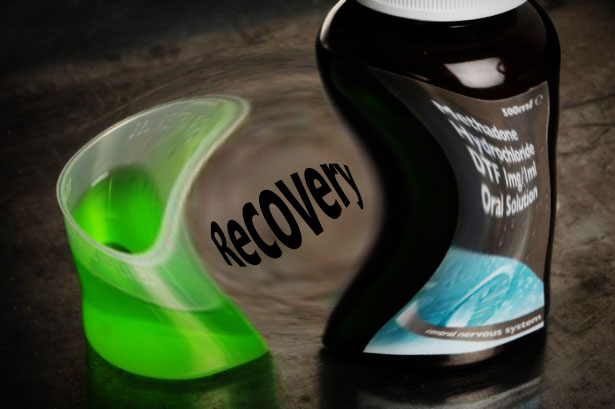
Berlin, like many big cities has a heroin problem. People presenting for help are being prescribed opioid replacement therapy (ORT) – a form of medication assisted treatment (MAT) in greater numbers. That’s a good thing isn’t it? Yes, but it’s not completely straightforward. A lot depends on what the professional and their patient think is the end goal of treatment.
At the start of this interesting German paper from a few years back entitled, “Why do patients stay in opiod maintenance treatment?”, Dr Stefan Gutwinski and colleagues say that the scientific literature indicates the point of opiate replacement is: “to increase survival and bring stabilization to patients, in order to enable them to reach abstinence of opioids.”
We can simplify this into two aims:
- To make things better, then
- To move on to abstinence
Many professionals would not agree with the second aim and would possibly replace it with ‘to retain in treatment’. There is an often unspoken tension between what researchers tell us is safest and what those coming to treatment set as a goal. As I wrote yesterday, abstinence is also something families prioritise. Despite this, while the evidence is pretty solid that number one is generally achieved, there is less to convince us that the next bit is happening.
To lay my cards on the table, I am committed to harm reduction and have prescribed (and do prescribe) MAT in community and residential settings. I also believe in the capacity of many with opioid use disorder to move on to long term abstinent recovery with appropriate treatment and safeguards. That’s why this kind of research is of interest to me.
The paper outlines that retention in ORT is not great, with just over half of patients sticking with methadone and fewer with Suboxone. Jason Schwarz has written before about disappointing retention rates for both methadone and buprenorphine in many research studies. It may be that long-acting injectable buprenorphine will improve this.
Despite poor retention in the Berlin study, they did report growing numbers of people on ORT. It appears though they are people who are not moving on to abstinence; I suppose the ones the press call ‘parked’ on methadone. So the authors ask: “Why is this?”
The researchers speculated that it could be because:
- fewer people are dying;
- that people don’t want to move on because of the benefits they are getting;
- that detox is generally unsuccessful, or
- that what staff think patients want is not what patients actually want.
To test this out they sent out an anonymous questionnaire to treatment settings in Berlin. Forty-six staff (more than half doctors and the rest nurses and admin) and 986 patients completed it. They focussed on whether ORT was of benefit, whether it was perceived as harder to detox from than heroin and how strongly patients wished to come off of ORT compared to how strongly staff thought their patients wanted to come off.
What did they find?
- Both patients and staff thought ORT helped physical and mental health.Beneficial effects of ORT on the ability to work and on crime were rated significantly higher by patients compared to staff.
- Staff and patients agreed that coming off ORT was hard. Patients thought it harder than coming off heroin.
- Patients wanted to eventually come off ORT at a significantly higher rate than staff estimated.
About half of the patients in the sample were over 40 years old and more than one in ten were over 50 with almost three quarters of patients struggling with opiate dependency for more than ten years. Only ten percent had never tried to detox, suggesting high failure rates which may have reinforced the belief that ORT was hard to more on from.
There was no differentiation made between methadone and buprenorphine. The study didn’t look at whether evidence based support and treatment was given at the time of the detox.
The thing that intrigues me the most was the:
striking discrepancy between the patients’ and staff members’ assessment of the patients’ desire to end OMT on the long term. The large majority of patients report the desire to end OMT on the long term, whereas only a minority of staff members believe that their patients might really have such a desire

David Best found much the same thing (in aspirational terms) in a sample of drugs workers in the UK. They believed only 7% of their clients would eventually recover when long term recovery rates are actually much higher. The DORIS study in Scotland angered some professionals when it reported that many patients entering treatment wanted only to become drug-free; something treatment was not delivering.
A study in Leeds found that service users, their families and friends placed “considerable weight” on abstinence and “ways of maintaining abstinence”. It’s clear to me that where there is such a mismatch, when the bar is set so low and when there is little hope pervading treatment settings, then it’s no wonder that so few actually do move on.
By the conclusion the authors find themselves at odds with the assertion at the start of the paper (that ORT has an aim of ‘abstinence from opioids’.) Here’s what they say (my emphasis):
Finally, detoxification of OMT is not the prime objective of treatment. The prime objective of treatment is continued physiological and social stabilization. As yet, there is no validated medical cure for opioid addiction. Until a curative medication or a safe curative procedure is developed, many of the patients may have to remain in treatment for the duration of their lives to avoid relapses, increased criminality, subsequent overdoses, and death during the post treatment period.
So the solution to the mismatch between the low expectation of staff and the higher expectation of patients is to lower the expectation of patients to that of staff? Well that’s one way of looking at it.
We still have the problem that lifelong ORT, whatever its evidenced benefits, is not what people want and that, in fact, many do move out of opiate dependence into long term abstinent recovery. These people would no doubt agree that methadone did make things better, but for them it was not the final destination.
What would it be like if the dearth of recovery-oriented research in the UK was addressed, if we focused on what works rather than what doesn’t? If all we do is compare ORT with stand-alone detox, then we are always going to see poor outcomes. What is the impact of abstinence-focussed treatment on injecting and drug deaths in Scotland? We don’t know.
Another more enlightened and rewarding approach might be to move away from thinking about a drug or a medical ‘cure’ as being the solution to addiction and looking to introduce recovery-oriented systems of care using strongly evidence-based psychosocial interventions and treatment where those interventions are of adequate intensity and duration. Linking people to recovery communities is protective with regards to relapse, but there is little evidence that it is happening to the extent that it might.
In the UK we have recovery-oriented drugs policies which aim for rapid access to treatment with a variety of approaches on offer. Reducing harms has to be first priority, but is it enough in itself? Clearly we need to listen to what patients and their families want from treatment and be honest about what’s going to help them get there.
The answer is not to lay out the choice as ‘ORT or abstinence’ but to see how we use ORT as a tool and to find ways of bridging people out of treatment and reliance on services into recovery if this is their goal. We can put robust structures in place to minimise harm and have rapid access back into medication assisted treatment if it is needed.
Some may indeed choose to remain in treatment in the long term, but we need to set the bar high and be positive about patients’ ability to move on in a treatment system that’s joined up and meets the needs and goals of patients at various points in the recovery journey.
Professionals should spend time with people in recovery to engender hope in themselves. The ethos and structure of systems of care need to change so that abstinent recovery becomes part of the norm and range of options instead of a wild aspirational status that we think is too dangerous and we actually believe most people will never achieve.
Now how do we make that happen?
Footnote: this is an updated version of a previously published blog.
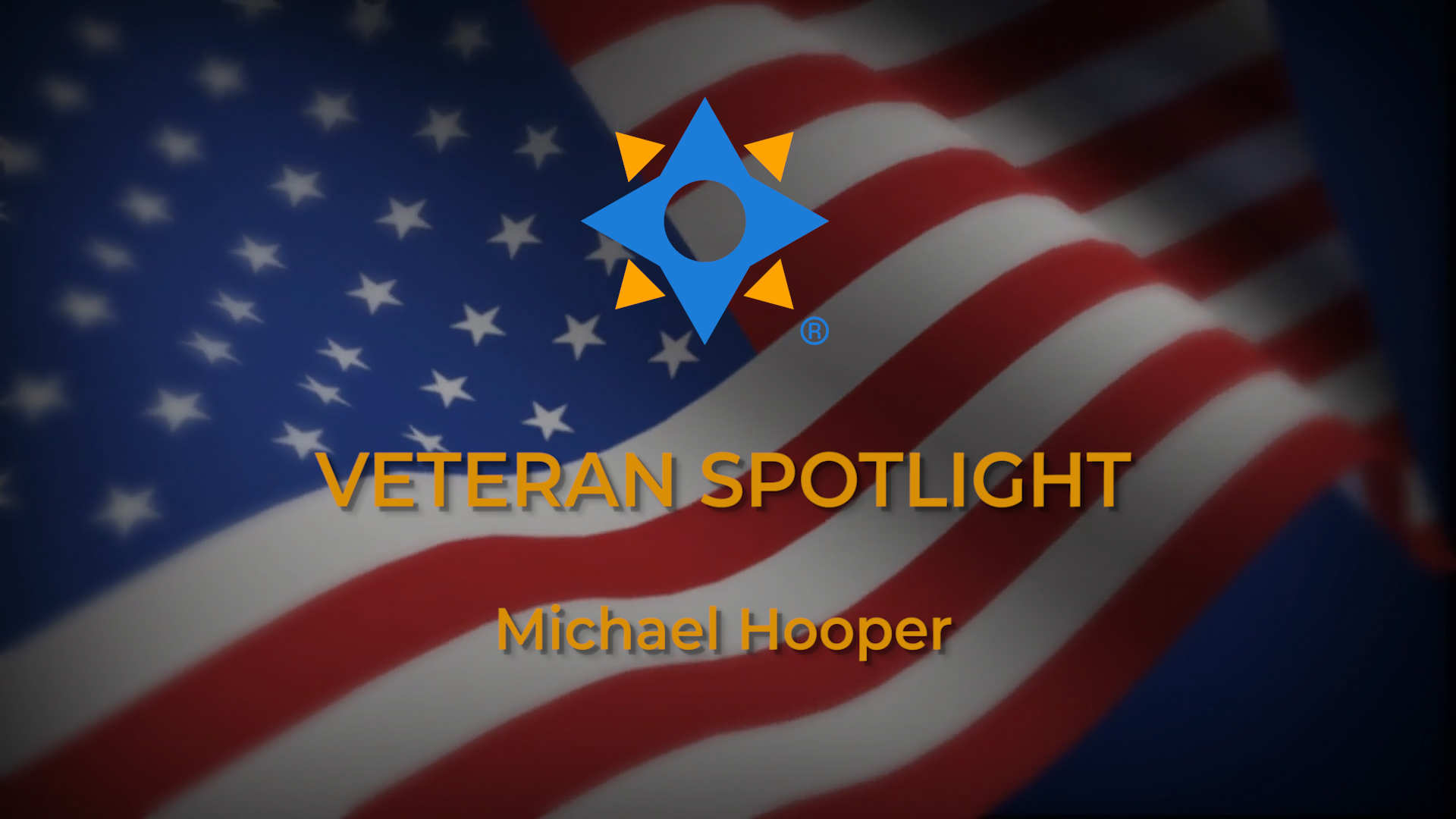
Mike Hooper proudly served his country in the US Army, but was secretly battling a substance use disorder. Upon his discharge from the military, he sought help from the VA office. There he found SMART Recovery. Today, Mike is the SMART State Outreach Director for Ohio and co-facilitator of the new Veterans and First Responders meeting.
View the full video on our YouTube channel
Listen to Mike Hooper’s Podcast
Learn more about becoming a SMART volunteer
Learn more about the Veterans programs
Subscribe to the SMART Recovery YouTube Channel
Video storytelling is a powerful tool in recovery, and we are proud to share our SMART Recovery content free-of-charge, available anywhere, on any device. Our videos hope to inform, entertain, and inspire anyone in the recovery community.
Subscribe to our YouTube channel and be notified every time we release a new video.
Subscribe To Our Blog
Join our mailing list to receive the latest news and updates from the SMART Recovery Blog.
You have Successfully Subscribed!

Research shows that an alarming number of veterans returning from military deployment and combat suffer from addiction. The traumatic experiences encountered on the battlefield can overwhelm coping skills and cause mental health conditions.
Veterans who have begun to address their challenges are uniquely qualified to help other veterans. In partnership with Veterans Administration (VA) hospitals across the country, SMART meetings offer veterans the help they need in a safe and supportive environment.
View the full video on our YouTube channel
Learn more about the Veterans programs
Subscribe to the SMART Recovery YouTube Channel
Video storytelling is a powerful tool in recovery, and we are proud to share our SMART Recovery content free-of-charge, available anywhere, on any device. Our videos hope to inform, entertain, and inspire anyone in the recovery community.
Subscribe to our YouTube channel and be notified every time we release a new video.
Subscribe To Our Blog
Join our mailing list to receive the latest news and updates from the SMART Recovery Blog.
You have Successfully Subscribed!
Who are you?
My name is Josh Meisler. I am a social worker and father of two school-aged daughters.
What do you do professionally?
I manage Recovery Support Services programming for Growth Works Inc. We are a non-profit agency based in Wayne County, Michigan.
Do you have any personal interest in addiction and recovery that you’d like to share?
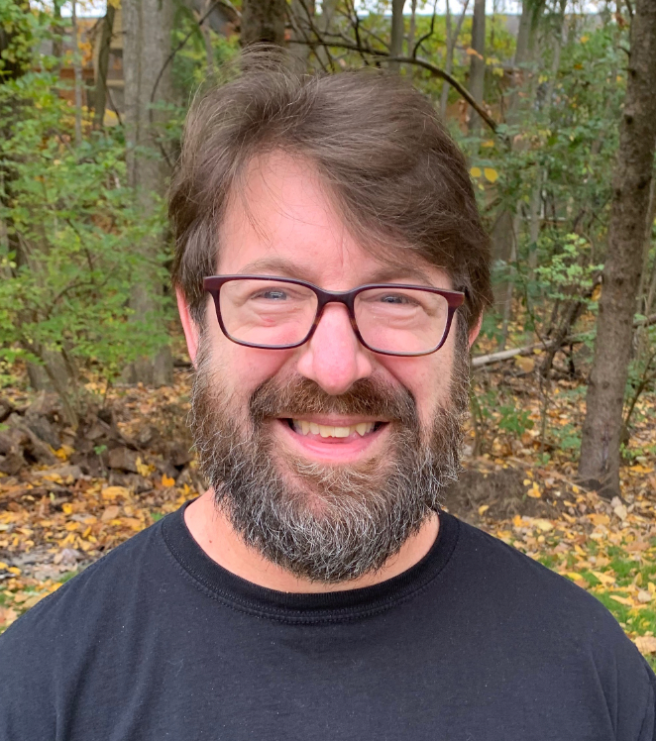
I am a person in long-term recovery from a substance use disorder. My life and the lives of my loved ones and communities have been profoundly shaped by addiction and recovery. Addiction is also a social justice issue, so my broader national and global communities are also shaped by addiction-related issues and circumstances. Those are sources of my personal interest in addiction and recovery.
Tell us about your professional experience in the area of addiction and recovery.
My first position in the field was as a street outreach worker, serving people experiencing homelessness in Boston, MA. Our target populations were substance abusing individuals. I became involved in advocacy through the Massachusetts Housing and Shelter Alliance Substance Abuse Committee.
After spending some time working in agencies that served people experiencing homelessness, I was motivated by the stark lack of services for substance abusing youth as a subset of the populations we served, to find a way to best serve these people in particular.
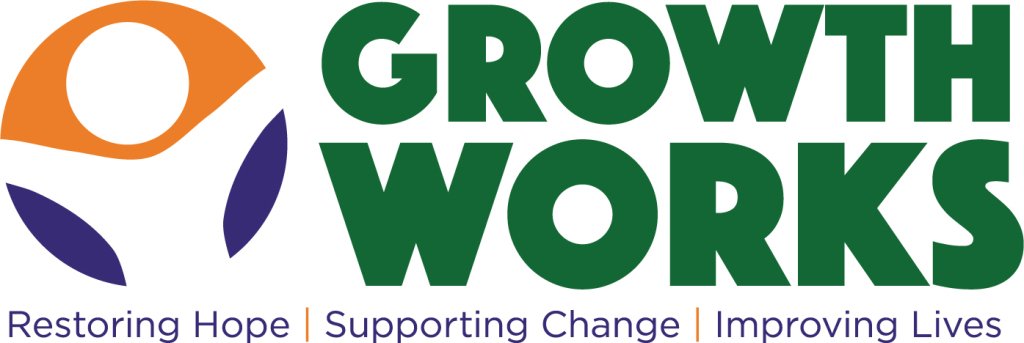
After returning to my home in Michigan, I found a position with Growth Works providing clinical SUD treatment to youth, which really means youth and their families and caregivers, who were adjudicated in Juvenile Drug Treatment Courts in Livingston and Washtenaw Counties.
I was able to help Growth Works establish our Recovery Support Services programs, where we respond emergently to police departments and a hospital, and also provide coaching to our agency’s clinical clients and to participants in sobriety and drug courts in Western Wayne county. When I was offered the opportunity to lead our Recovery Support Services, I moved into my current role as Program Manager.
What are you most proud of?
In my work life? I am proud of establishing Peer Recovery Coaching as a feature of the Juvenile Drug Treatment Court team in Washtenaw County, I think we are the first JDTC in the state to integrate dedicated peer recovery services in that setting. The talented and passionate Coaches in that program have broken ground and I think are developing amazing practices with this needy and wonderful population.
I am proud to be a part of an organization that provides high quality care to many people who might otherwise not have access to it.
The other day I saw the mother of a young person who had been in my treatment program four or five years ago. She approached me, and spoke with passion and emotion about her gratitude for the work we had done with her and her family. Those rare chance meetings are great gifts, and are always my proudest moments.
What keeps you working in addiction and recovery?
I feel extremely lucky to be able to work in our field. I love the people we serve, and I love the opportunity to support individuals who are attempting to change. I know personally as well as professionally that there is a powerful positive ripple effect through our families, communities, and society, when a person with addiction recovers. The little charges we get from running into old clients, and other opportunities to reflect on the change we’ve been able to witness and support, keep me energized and motivated to grow. We have come a long way, and we still have a long way to go.
How has the pandemic affected your work?
It has affected my work profoundly, as with everyone, I expect, because it has affected my life profoundly.
I am extremely fortunate and grateful to work for an agency which made an early and comprehensive commitment to maintain every employee’s compensation and position. That allowed us as employees to really focus on how best to continue to serve our clients, collaborators, and stakeholders, in these unprecedented conditions.
Shifting clinical and recovery support services to remote delivery has been extremely challenging, especially as we serve a lot of folks who are not well connected socially or well-resourced in the best of times. Developing formats and procedures to deliver a variety of individual and group therapy and recovery support services has taken a lot of work. Similarly, working with our many partner agencies and organizations to continue effective collaboration has required a lot of effort and energy.
Personally, the move to working from home, while also providing care to my children and other family members, has been a learning experience, that is not without advantages. It has been good for me and my kids to have more time together, to slow down a little, and to be more focused on our family life. Trying to help them do their school work while I work at the kitchen table is a challenge for all of us.
What effects of the pandemic are you observing in the people you serve?
Well, as we all know, SUD and addiction treatment and recovery are complicated and compounded by socio-economic strain and social isolation. There has been a lot of socio-economic strain and social isolation these past few months. Our clients with co-occurring mental and physical health conditions are most severely impacted. Serving youth and families who are struggling to meet basic needs is difficult in the best of times. There is always a lot of powerlessness and witnessing in our work, now as much or more than ever.
What, if any, long term effects do you anticipate on the field?
Again, I am proud of the way we have been able to pivot to providing services remotely, through telehealth services, rapidly and effectively. Obviously, there are benefits and costs to providing SUD services in these formats. I expect that remote e-services will emerge as a greater proportion of treatment services going forward. I believe that some of what happens between treatment and recovery support professionals and our clients cannot be replicated through a screen, and I worry that our industry will be attracted by the potential cost savings of remote services at the expense of client care.
I expect that many of us will never return to the office or clinic full time, and that is not necessarily a bad thing, especially for those of us who have safe and comfortable spaces to do some work at home. Still, the energy that is generated and shared in an effective “in real life” interpersonal encounter, be it clinical or in support services, can probably never be completely replicated through a screen or a speaker.
Have you seen any benefits or new opportunities in the pandemic?
For whatever reasons, I think we have seen advocacy for addiction, and behavioral health services in general, from some unexpected places through this ordeal. I hope that we can maintain that attention and translate it into dollars and programs with lasting positive effect.
In my work at the intersection of juvenile and criminal justice and addiction, I see the pandemic and the attention to social inequity that has accompanied it in these past 6 months as yet another opportunity to refocus our responses to addiction toward treatment and away from criminalization. In the communities that my agency serves, we see some positive concrete initiatives towards that goal. We have come a long way, and we have a long way to go.
If you were able to work on a fantasy project to improve treatment and recovery support, what would it be?
Wow, that’s a hard question to answer briefly or concisely. My fantasy would be to develop a wholistic system of long-term care for people with addiction and substance use disorders which focused on the underlying causes and conditions that lead many of us into addiction, including lack of education, employment, healthcare, trauma recovery, and other community resources. My friend and colleague Matt Statman reminded me recently of an answer to an interview that Bill White received from a provider in Chicago and I’ll paraphrase it, with apologies, here: We do not have a lack of sufficient Pain to recover, we lack sufficient Hope.
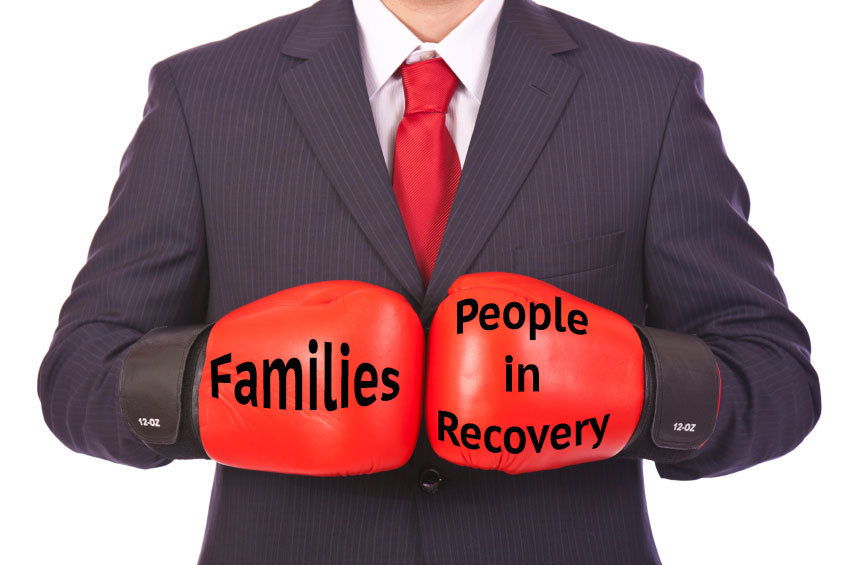
Addiction is an equal opportunity condition. Families get to suffer alongside the person with the problem. But as Alex Copello and Jim Orford noted in a past Addiction editorial, there’s a paradox here that needs attention. Firstly, evidence suggests that when families are involved by treatment services, retention in treatment is better. Retention in treatment is associated with better outcomes. It also suggests that positive outcomes are more likely for the family members. So the evidence is there, what’s the paradox? Copello and Orford are clear:
On the whole service delivery remains focused on the individual drinker or drug user, with families and other members of the user’s social network playing a very peripheral role, if any.’
Copello and Orford, 2002
They go on to say:
With very few exceptions, help for those concerned about the user is reactive, poorly thought out and marginal.
Quite damning really.
Unfortunately, there is evidence that families are also marginalised in addiction recovery research (itself the poor relative of addiction research). In their recently published paper which looks at how individuals in recovery and their families have shared and differing perspectives, Anne Dekkers and her colleagues point out more whammies for families in terms of research interest.
According to Dekkers et al, the focus of existing research mostly attempts to capture the perspectives of individuals in recovery, with a specific focus on transitions from addiction to recovery, the role of substance use and abstinence, the role of treatment, and identity and stigma. So then is nobody interested in families?
Well, of course we are – just not enough to involve them in treatment and research it would seem.
So, what did Dekkers and colleagues find out about the different ways of looking at recovery depending on whether you were a family member or a person seeking recovery? These are explored under themes.
Consequences
There were some shared themes, but also discrepancies. As you might expect it’s the differences that are intriguing. Individuals in recovery (this included those in MAT and those abstinent) and family members both felt the pain and destruction that addiction brings, but while the individuals were focussed on negative consequences to themselves, families were aware of consequences to the individual and the wider family. They felt ‘reduced to powerless bystanders’.
Abstinence
Family members were blunt about this, mostly regarding abstinence as a prerequisite for starting recovery. Individuals in recovery were much more nuanced and saw a range of important factors of which abstinent was one. There was ambivalence amongst some of them around possible future controlled use of substances. There were mixed views on alcohol with some believing it could be safe in recovery. (See recent post on this).
Identity and behaviour
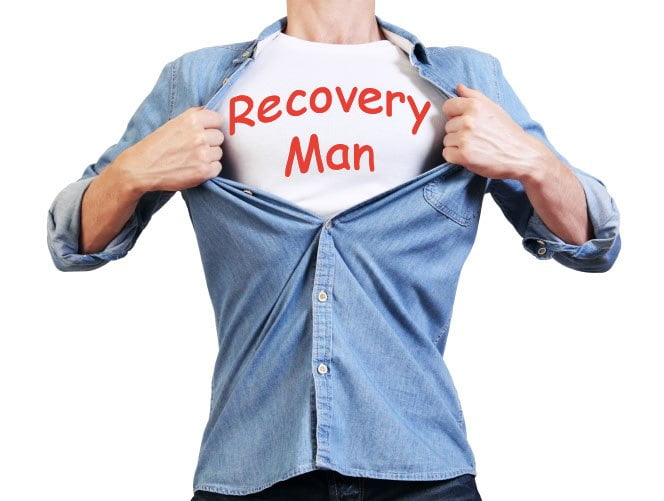
The emphasis for individuals in recovery was in relation to identity and daily life issues, growing as a person for instance, while for families it was looking for changed behaviour, with little interest in changed identity. There were striking differences in expectation of the pace of change – with family members looking for faster progress and anticipating their loved one was further on in the recovery journey than the individual actually judged they were.
Support
Both groups saw the need for this, but for individuals it sometimes felt that support was slow to grow with a rapid decline in trust from family members when relapse occurred. The existing or previous social network often included using friends who were a barrier to recovery. Those individuals whose treatment was in a therapeutic community (TC) spoke of ‘friendships for life’ founded in TC s.
Treatment
Family members felt it important that they were involved in treatment to ‘complete’ the story of the individual. They felt that without this, treatment would be superficial. (I identify – the impact of family therapy in the setting I work in is profound and often brings about profound changes for both the family and the patient). Family members had positive experiences when they were involved but also mentioned the need for long term support. In contrast, individuals only briefly mentioned family involvement in treatment as insightful.
Place in society
Individuals in recovery valued issues related to citizenship/society (in keeping with many definitions of recovery) including regaining their place, but also they saw the part that society could play in their recovery, while family members barely spoke of this. Stigma was experienced though by individuals in society, for instance when they tried to get back into work.
This was small scale qualitative research, but it does highlight the nuance and detail that might be missed in number-crunching research. Clashes clearly occur over expectations on the pace of change, the nature of change, trust and the importance of abstinence.
Bottom line
There are multiple recommendations in the paper which are sound, but specifically on families, they say two things:
- Families want to be involved in treatment and should be
- Families need ongoing support in their own right, and it should be provided
Drug and alcohol deaths
My mind returns to the lack of research on families and how it might relate to substance-related deaths. I’m aware there are no easy answers to the harrowing problem of drug and alcohol-related deaths, but I do wonder if there might be an impact of some kind through having a much more assertive policy of involving family members in treatment and providing ongoing support for them. In addiction treatment we generally underplay the impact of social interventions It would be great to see research to test this out.
In Scotland, we have a national organisation – Scottish Families Affected by Alcohol and Drugs, which is a great resource. They are already trying to do both of the things above, but I wonder how receptive treatment organisations are and what priority local commissioners put on family involvement and support, even though it is embedded in our national drug and alcohol strategy. We fund our own family programme through grant funding rather than statutory funding which tells its own story.
Action
While families are devastated by addiction, family members can and do recover from it. I think that by actively pursuing family treatment involvement and ensuring robust support systems we can do better for them and consequently do better for those individuals with substance dependence. It would be great to see this prioritised in practice and research.

Lately, I’ve been preparing some updates of training materials. In doing so, I’ve gone back and re-gathered old information from original sources once again, as I have done before. This time, it’s been especially interesting.
See what you notice in comparing the definition of addiction from ASAM in 2011, the DSM-5 in 2013, and from ASAM again in 2019.
First, here’s the ASAM short definition from 2011.
Addiction is a primary, chronic disease of brain reward, motivation, memory and related circuitry. Dysfunction in these circuits leads to characteristic biological, psychological, social and spiritual manifestations. This is reflected in an individual pathologically pursuing reward and/or relief by substance use and other behaviors. Addiction is characterized by inability to consistently abstain, impairment in behavioral control, craving, diminished recognition of significant problems with one’s behaviors and interpersonal relationships, and a dysfunctional emotional response. Like other chronic diseases, addiction often involves cycles of relapse and Remission Without treatment or engagement in recovery activities, addiction is progressive and can result in disability or premature death.
Doing some digging, while looking for that old 2011 ASAM definition, I found this (on 10/26/2020):
This policy statement is archived and no longer considered active ASAM policy. Archived statements are available for historical purposes upon request.
I’ll bring in a more recent statement from ASAM later in this post. But next in chronological order is the statement from the American Psychiatric Association’s DSM-5 in 2013. I added the boldface to the word “addiction” so it’s easy to see.
Note that the word addiction is not applied as a diagnostic term in this classification, although it is in common usage in many countries to describe severe problems related to compulsive and habitual use of substances. The more neutral term substance use disorderis used to describe the wide range of the disorder, from a mild form to a severe state of chronically relapsing, compulsive drug taking. Some clinicians will choose to use the word addiction to describe more extreme presentations, but the word is omitted from the official DSM-5 substance use disorder diagnostic terminology because of its uncertain definition and its potentially negative connotation.
And now, back to ASAM. Here’s the current formulation of the ASAM addiction definition (2019):
Addiction is a treatable, chronic medical disease involving complex interactions among brain circuits, genetics, the environment, and an individual’s life experiences. People with addiction use substances or engage in behaviors that become compulsive and often continue despite harmful consequences. Prevention efforts and treatment approaches for addiction are generally as successful as those for other chronic diseases.
I’ll share some of my thoughts, and one final approach to defining addiction.
Overall, I’m content with the ASAM 2011 definition, but I wish it said addiction was “…a primary, chronic bio-psycho-social-spiritual disease involving brain reward, motivation, memory and related circuitry. Dysfunction in these circuits leads to characteristic biological, psychological, social and spiritual manifestations.” As it sits, the ASAM 2011 definition makes addiction merely a brain illness with whole person manifestations.
With the DSM-5 I notice they state addiction is a term used to “describe severe problems related to compulsive and habitual use of substances” and forbid us diagnosing it. I wish the phenomenology of addiction was a disorder we were permitted to find – a qualitatively different problem from only quantifying the number of criteria we count. After all, some people do suffer from this problem.
Looking at the ASAM 2019 definition, I find the first sentence not very helpful. It seems to me that many disorders are a “treatable, chronic medical disease involving complex interactions among brain circuits, genetics, the environment, and an individual’s life experiences” and this does not add much.
Where else can we look?
Readers of Recovery Review might recall work by Norm Hoffmann I have featured previously toward his attempt to answering the question, “What is addiction?”
Here is the bottom line:
In short, Norm Hoffmann has examined the relative weight of each of the 11 DSM-5 SUD criteria, separately, as applied to the probability of having any one or more additional positive criteria for SUD (from data collected on thousands of consecutively incarcerated individuals).
He asks which DSM criteria for SUD are found primarily in severe SUD’s?
Norm’s answer:
- Efforts to control/cut down but unable (rule setting),
- Craving with compulsion to use,
- Failure to fulfill role obligations,
- Activities given up or reduced,
- Withdrawal.
That is to say, in his sample, the presence of any one of these 5 criteria, separately, was more likely than not to be present among 6 or more total positive SUD criteria for any one individual.
In presenting these results from his research, Norm has asked if perhaps the total constellation of The Big 5 is what is commonly called the “disease of addiction”.
Interestingly, Norm has also noted the individual may fit mild or severe characteristics (aside from DSM scaling), based on The Big 5, and as a result he has expressed the following questions:
- Are those with mild to moderate DSM ratings without any of the Big 5 able to moderate use with less intense and briefer services?
- What are the implications of The Big 5 for etiology and course of illness of the individual?
- Specifically, do those that are positive on 2 or more of Big 5 in fact require initial residential placement and/or more intense and longer care, and require abstinence – even when not numerically “Severe” according to DSM-5?
For the curious, here is the link to the full text of that earlier post with more from Norm on the matter.
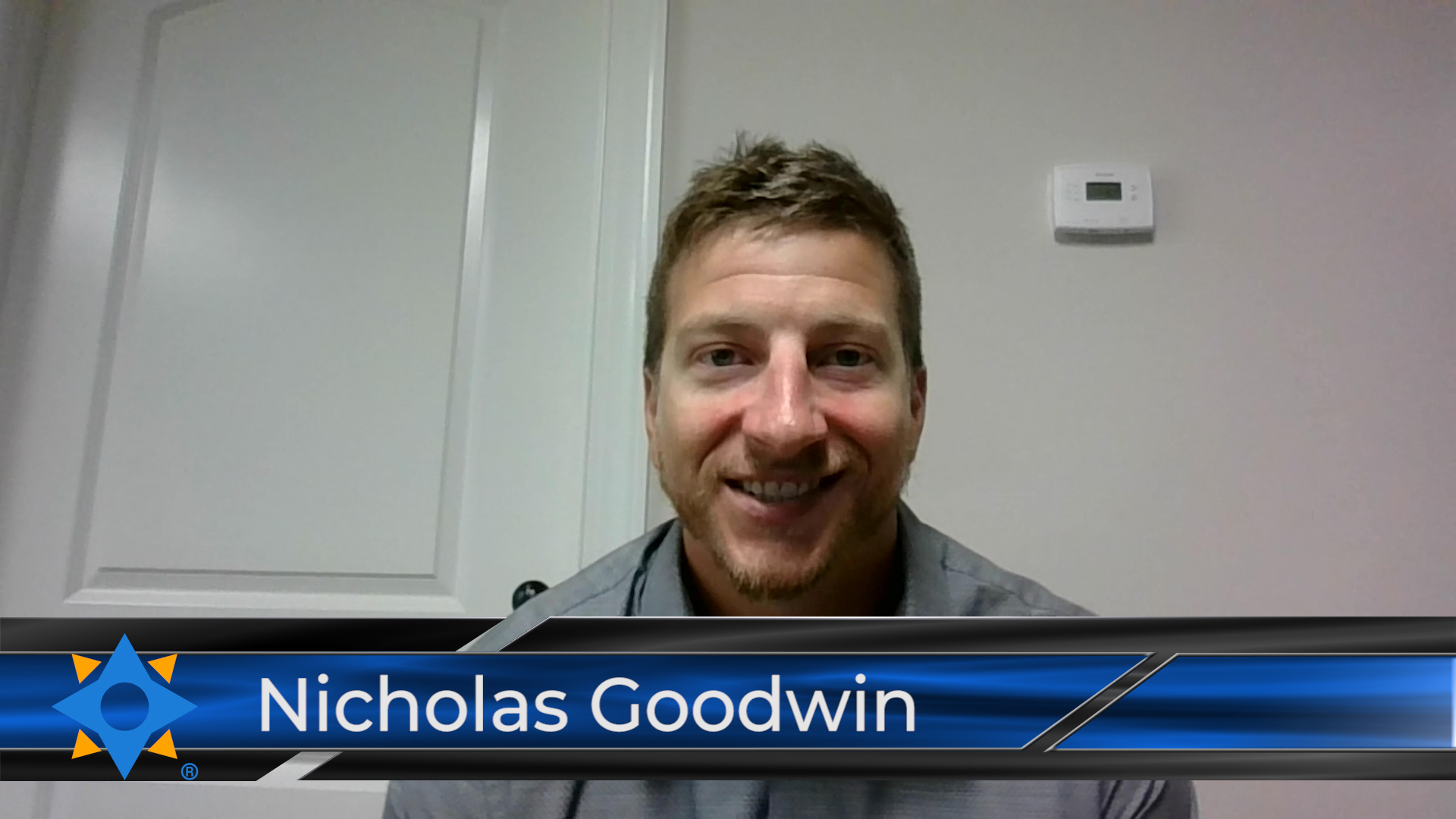
Nick Goodwin proudly served his country as a US Marine, but his reintegration into civilian life had its challenges. Watch Nick explain how his local VA hospital helped him overcome his alcohol use disorder by introducing him to SMART Recovery.
View the full video on our YouTube channel
Listen to Nick Goodwin’s podcast
Learn more about becoming a SMART volunteer
Learn more about the Veterans programs
Subscribe to the SMART Recovery YouTube Channel
Video storytelling is a powerful tool in recovery, and we are proud to share our SMART Recovery content free-of-charge, available anywhere, on any device. Our videos hope to inform, entertain, and inspire anyone in the recovery community.
Subscribe to our YouTube channel and be notified every time we release a new video.
Subscribe To Our Blog
Join our mailing list to receive the latest news and updates from the SMART Recovery Blog.
You have Successfully Subscribed!

Nick Goodwin is a SMART Recovery facilitator and co-chair of the new Veterans and First Responders meeting starting on November 10th. He is a former Infantry Officer, 3rd Battalion, 5th Marines.
In this podcast, Nick talks about:
Additional references:
Click here to find all of SMART Recovery’s podcasts
Subscribe To Our Blog
Join our mailing list to receive the latest news and updates from the SMART Recovery Blog.

